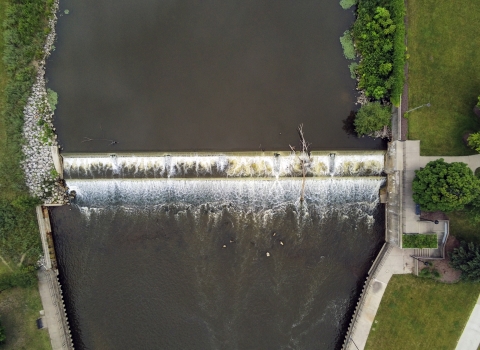What is the issue?
Collisions with vehicles are believed to be among the top five direct causes of bird mortality in the United States. A recent study estimated that between 89 million and 340 million birds die annually in vehicle collisions on U.S. roads.
Why does this happen?
Mortalities from collisions affect some bird groups more than others. Ground-dwelling and ground-nesting birds, waterbirds, fruit-eating birds, and birds that are drawn to attractants on roads have been found to be at higher risk of vehicle collisions. The specific risk for each of these bird groups is due to a number of factors including maneuverability, feeding behavior, preferred habitat, and flight height, or a combination of these.
Ground dwelling and ground-nesting birds:
These birds are often sitting or moving at ground level, making them more prone to vehicle collisions. Birds that nest near roads, either in tall grass on the side of roads or in highway right-of-ways, are at particular risk of collision. Many ground-dwelling species have reduced maneuverability, which increases the risk of a collision.
Examples of slow moving ground-dwelling species that are particularly vulnerable to vehicle collisions include juvenile waterfowl (e.g., ducks, swans and geese), and mainly terrestrial birds (e.g., pheasants, turkeys, grouse and prairie-chickens).
Waterbirds:
Certain combinations of wind direction and road position increase waterbirds’ risk for vehicle collisions. Being carried by wind currents perpendicular to bridges or areas traveled frequently by waterbirds can put birds in the way of oncoming traffic.
Owls:
A few owl species, particularly Great Horned Owls, Barn Owls, and Short-eared Owls, commonly forage at the same height as vehicles, which makes them particularly prone to vehicle collisions.
Birds drawn to attractants on or near roads:
Some birds are drawn to roads because of attractants. Road-kill scavengers at risk include raptors (hawks and eagles), vultures, and corvids (crows, jays, and ravens) that feed on animal carcasses.
Fruit eating birds such as Cedar Waxwings and Thrushes are drawn to medians and roadsides with fruit-bearing plants. In the winter, finches such as Pine Siskins and Crossbills are drawn in large groups to the sand, salt and de-icing agents on the roads. Not only are these agents toxic for the birds to ingest, but they cause congregations of birds directly in the way of oncoming traffic.
What are some solutions?
- Use of diversion poles - Using diversion poles on bridges can help keep waterbirds out of vehicle areas.
- Use of low fences - Low fences along highway medians, rights of way, and other areas of roads where birds are known to travel frequently at low altitudes may encourage higher flight height and help keep owls and other birds that move frequently in and around vehicle level in these areas out of harm’s way.
- Removal of attractants - Attraction of birds to roads can be minimized by:
- removing carcasses from the roadways
- using road treatments that do not attract birds
- removing fruiting plants that attract birds from medians and roadsides
- Use of warning signs - Using signs that urge drivers to watch their speed and stay alert in known high wildlife crossing areas can help reduce collisions
- Monitoring efforts - Monitoring (searching roadsides regularly for dead/injured birds and the source of these – e.g. nearby attractants) can help identify problem areas and causes so appropriate measures can be implemented
- Use of wildlife crossings or underpasses - Wildlife crossings or large underpasses give animals alternatives to crossing directly over a road, which increases their risk of being hit by vehicles. In this way, wildlife crossings and underpasses reduce road kill that attracts birds like raptors and corvids that feed on dead animals to roadways. They also provide a means for non-flying birds to cross roads safely. However, correctly locating these crossings is important for their effectiveness
For more information about measures and guidance for avoiding and minimizing impacts to migratory birds, visit the Conservation Measures and Guidance Documents webpages.
Material on this webpage was sourced from: Jacobsen 2005 and Loss et al. 2014



